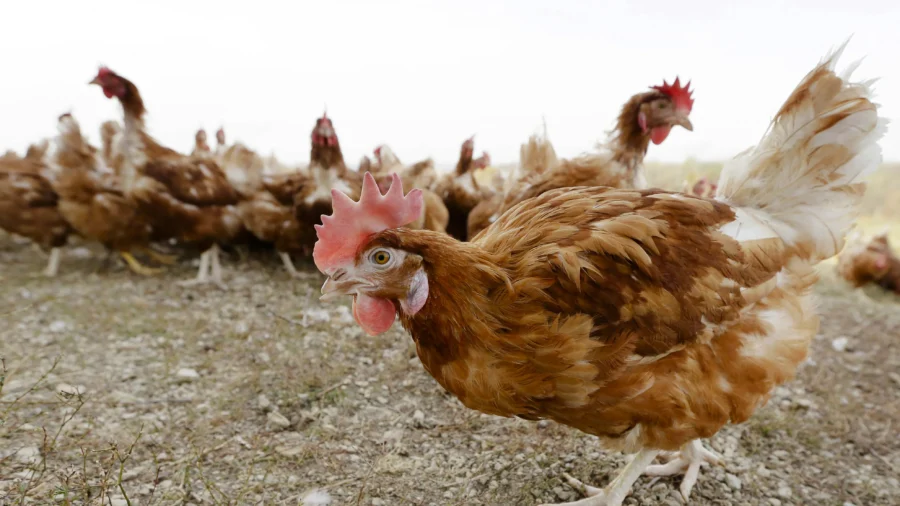Utah culled a large number of turkeys recently after confirming the presence of the highly pathogenic avian influenza (HPAI) and is taking action to prevent the infection from spreading, according to the state’s Department of Agriculture and Food.
“Between November 10 to 19, 2024, three turkey farms in Piute County totaling 107,800 turkeys and one backyard flock of 253 birds in Salt Lake County were confirmed positive for HPAI,” a Nov. 22 update from the agency stated.
Officials are currently conducting genetic sequencing of the strains involved in these outbreaks, it said.
“Though the overall risk to public health remains low, HPAI is a serious disease, requiring rapid response, including depopulation of affected flocks as it is highly contagious and fatal to poultry,” the agency said.
“Affected birds were depopulated within 24 hours of diagnosis at each site to limit further disease spread. Overall impacts to the food supply are anticipated to be limited at this time.”
Authorities have decided on an on-site burial for disposing of the culled poultry at Piute County.
All personnel attending the site are required to wear personal protective equipment and all equipment is disinfected to contain the virus within the site.
“Poultry owners should practice strong biosecurity and monitor flocks for signs of illness and report any sick birds immediately to the State Veterinarian’s Office,” the agency said.
“Individuals who work in close contact with infected animals may be at higher risk for contracting HPAI/H5N1 and should take precautions including using recommended personal protective equipment.”
The state saw another outbreak last month in which more than 1.85 million birds in Cache County were affected. At present, five poultry farms operating in Utah are in quarantine, the department said.
The current HPAI outbreak in the United States began in February 2022. Over the past 30 days, infections have been confirmed in 47 flocks nationwide that together account for 6.05 million birds, according to data from the Animal and Plant Health Inspection Service.
Many of the cases are in California, which alone accounted for 25 flocks totaling more than 5.21 million birds. Infections among flocks have been reported in other states including Arizona, Minnesota, Washington, Oregon, South Dakota, and Illinois.
Avian Flu in Humans
There have been 55 confirmed avian flu cases among U.S. citizens, according to the latest data from the U.S. Centers for Disease Control and Prevention.
Again, California accounted for most of the infections, with 29 cases, followed by Washington with 11 and 10 in Colorado. Michigan reported two incidents, while Missouri, Oregon, and Texas registered one case each.
The largest source of exposure of these infections was cattle, accounting for 32 cases. Poultry was responsible for 21 incidents.
The agency said in a Nov. 18 update that the immediate risk posed by avian flu to the general public is low. However, “people with exposure to infected animals are at higher risk of infection,” it said.
“All recent cases have occurred in workers on affected farms. All available data so far suggest sporadic instances of animal-to-human spread. These farm workers all described mild symptoms, many with eye redness or discharge (conjunctivitis),” it said.
The CDC also recently confirmed a case of bird flu infection in a child, the first incident in a minor. The child, from California, exhibited mild symptoms and was in recovery, according to a Nov. 22 update from the agency. None of the family members tested positive for the virus.
“To date, there has been no person-to-person spread identified associated with any of the H5N1 bird flu cases reported in the United States,” the CDC noted.
Meanwhile, the first case of avian flu in a pig was confirmed recently by the U.S. Department of Agriculture. The pig, from Oregon, had previously shared space with infected poultry. Officials euthanized five pigs on the property and put the place under quarantine.
From The Epoch Times

